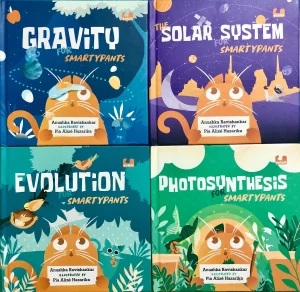Written composition is often perceived as one of the more “difficult” areas of language. We may find grammar easy to understand but when it comes to writing and composition, many people feel uncomfortable and incapable. Journal writing for kids comes right in as a way to enhance and improve creative writing skills.
Teachers and parents often wonder how they can get their children to “write” well. Once, on a similar thinking spree, I encountered some information about “writing journals” as a way of making students more comfortable with and better at creative writing. It is worth going into some detail of how journal writing for kids works to make children better writers.
What’s the matter with writing?
A system of journal writing works slowly but surely towards making children better writers. It involves a set period of time (preferably the same time, so it is a part of the routine) every day when students write something on a given topic in their special “writing journal”.
When any writing task is given to children, a majority of them face two major hurdles. The first one is a question of what to write and how to organize the material. While implementing a regular Journal writing for kids program, teachers (or parents) can start by giving very simple topics (ones that the child can write easily on) and then move on to more difficult ones. Gradually, the child will become more confident about managing difficult content and will be able to handle more challenging topics.
Another hurdle is the fear of evaluation. The most important aspect of a writing journal is that the teacher does not “correct” the work and point out mistakes. She just ensures that children complete their work. This removes the fear of being judged and criticized for their writing – a fear that prevents many children from expressing themselves through writing. Journal writing for kids is a long term technique that works slowly but deeply.
Journal writing for kids: topics
Topics for the journal activity need to be planned in advance. If one topic is to be given to the student daily, the teacher needs to have a list of topics ready. The topics can be written on the board daily, given as a print out, dictated or even kept in an “idea box” as chits that children can pick up.
Depending on the age and level of students one can generate a list of topics. The topic must not be difficult. Remember, the purpose is to give the child a task that he enjoys doing – not something that will put him off writing.
Benefits
The greatest benefit of a “writing journal” system is that it provides students with a writing experience where they are free to express themselves without any pressure of being evaluated. This leads to a more positive attitude towards writing.
This is not to say that there is no assessment involved at all. In fact, an overall assessment can be taken at the end of the term or the year to gauge many aspects of the child’s writing. For example, the teacher or parent may not correct each written piece that the child writes daily. However, they can glance through his work and identify common areas of weakness or strength in his writing and then take action on that. For example, they may notice that his spellings are poor though his ideas are good. They can then give additional practice on spellings to him. Alternatively, they may see that he is good at grammar but his organization of ideas is not up to the mark. They can then give him practice in that area. At this stage, it will be easy to actually gauge where in the area of language the child needs help. This collection of the students’ work will show exactly where he needs help. Is his punctuation alright? Does he need vocabulary development? Does he make grammar mistakes?
Over a period of time, by sheer regular writing practice, children will improve their writing and thinking skills – not to mention their attitude towards writing. When teachers go through journals over a period of time they will see a pattern unique to each child.
Journal writing for kids: The Mechanics in a nutshell
- It is a special note book that is used only for writing activities.
- Students write this journal daily, preferably at a specific time.
- For starters, the topics chosen are simple and short. As and when the child becomes more comfortable with the process, the length and difficulty of the topic can increase.
- It is not necessary for the teachers or parents to actually correct every word of what the children write. Instead, it would suffice to just ensure that children do the work.
- It should be on a regular basis. Starting the day with day with a few minutes of journal writing or ending the day with it is a good idea. Plan a time frame that will be given to complete the writing.
Here are some resources for journal writing for kids: A selection of journals with ready prompts, or a practice-oriented book exploring the therapeutic power of journal writing, or simply a selection of beautiful journals to spark-off the project!
This should provide a great start to journal writing for kids!




